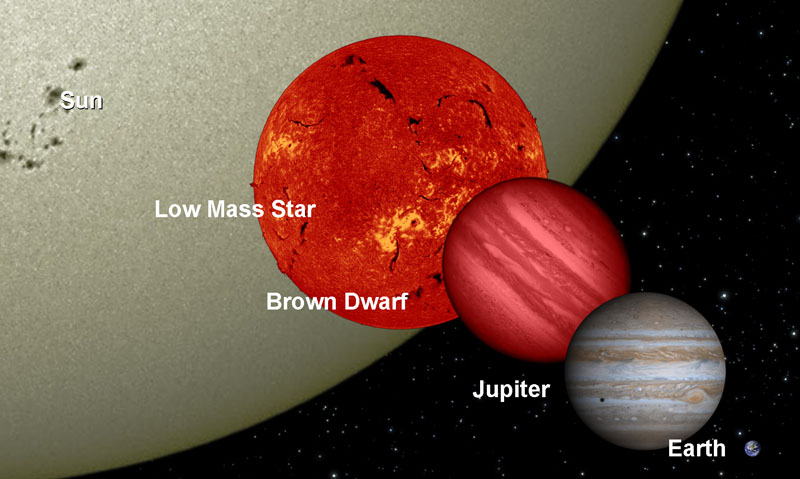 |
| Above: How Jupiter compares to the smallest stars. Some people are prejudiced about this sort of thing, but I like 'em big. |
So Jupiter has been a major target for probes and space telescopes - the JUNO space probe is there right now, returning some astounding images and unprecedented results. So let's say we could have ridden with Juno to the Jupiter system, then gone our own way to have a poke around the giant planet's territory. What are the Jovian equivilents of Niagra falls and Everest?
1: The Great Red Spot
 |
| Image by NASA/JPL, processing by Jason Major. |
Just recently the JUNO space probe flew closer to it than any spacehip ever before, sending back astounding images like the one above - you can see more, here.
2: Gigantic aurora
 |
Earth's aurora
are the result of solar weather interacting with its magnetic field. So,
given that Jupiter's magnetic field is so huge it would be as big s the
Moon when seen from Earth (if it were visible),
it's not surprising that Jupiter's aurora are pretty damn spectacular.
In fact, they're hundreds of times stronger, and on top of that they're
both non stop and several times bigger than our whole Earth.
3: The swirling chaos of Jupiter's north pole.
4: Io
 |
In my opinion astronomers project emotions onto titanic
cosmic things a bit much: A supernova does not have a 'fury', guys, it's an exploding star - it doesn't need fury!
And
of course, I never do that myself... ahem.
But when it comes to
Jupiter's moon Io the word 'hellish' is totally appropriate: Almost the entire Moon is covered in lava lakes, volcanoes, and sulphur deposits.
Driven by the flexing of its core by Jupiter's massive gravity, Io rides
above Jupiter's night time clouds like the spirit of vengeance itself.
5: Europa
If Io shines in Jupiter's sky like a spirit of vengance, it's sister moon Europa is the spirit of serenity: The same forces that have turned Io into a volcanic hell scape have warmed the core of the icy moon Europa, melting the lower levels of ice into an ocean more immense than anything found on Earth: Spanning the whole moon, and up to 100 km deep, this ice covered deep is where Poseidon would truly belong.
6: Titanic comet strikes
 |
| Above: The fragments of comet Shoemaker-Levey 9 |
That's the whistle stop tour of Jupiter. But will ordinary people one day get to see these things frst hand? What do you think?
You've
read our science facts - have you tried our science fiction? You can
pick up our book on Kindle, or as a paperback, by following this link...
"Like Phillip K Dick tweeting" - Tageblatt magazine
"Like Phillip K Dick tweeting" - Tageblatt magazine
...or, if you'd like to help us do things like podcasts, animations, and videos here why not...




No comments:
Post a Comment